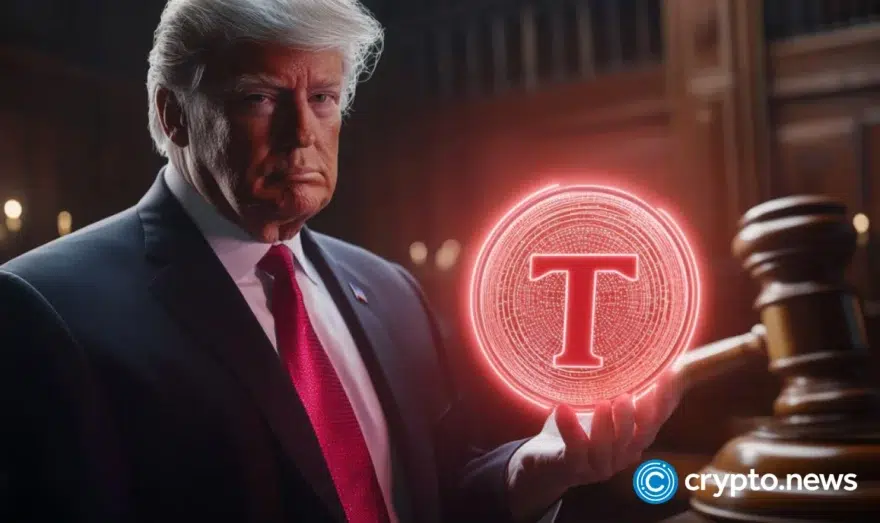Exploring the expansive ecosystem of EVM-compatible chains

The rise of blockchain technology has transformed the way we approach transparency, security, and decentralization in digital interactions.
Yet, in this dynamic landscape, as the technology evolves, certain challenges have emerged, particularly in the context of the Ethereum (ETH) blockchain – scalability, interoperability, and transaction speed.
Addressing these crucial issues are Ethereum Virtual Machine (EVM)-compatible chains, carving out new pathways to a future where blockchain becomes a cornerstone of our digital lives.
These chains represent the next level of blockchain technology, unlocking new horizons of scalability, interoperability, and transactional efficiency. They are the stepping stones to broader adoption and a fuller realization of the technology.
We delved into the discussion with Alex Shevchenko, co-founder and CEO of Aurora Labs, the team behind an EVM-compatible chain Aurora built on the NEAR Protocol, to explore the vast implications of these chains.
From their real-world applications, their safeguards against vulnerabilities, to their role in the decentralized finance (DeFi) ecosystem, this conversation navigates the multifaceted terrain of EVM-compatible chains.
Alex, could you elucidate the primary advantages of EVM-compatible chains compared to other blockchain platforms and how these benefits translate to real-world applications? How do these chains ensure security against vulnerabilities like the 51% attack?
AS: EVM-compatible chains have established their credibility within the blockchain sphere largely due to their interoperability, meaning they can effectively communicate and exchange data with other platforms.
This quality is a boon for developers, as it allows them to take advantage of an extensive ecosystem of development tools and services. These include Graph and Covalent for querying blockchain data and frameworks like Truffle and Open Zeppelin SDK that provide the building blocks for blockchain applications.
The 51% attack refers to an event where a single entity gains control over more than half of a network’s mining power. While such an occurrence is theoretically possible, many EVM-compatible chains use proof-of-stake (PoS) consensus mechanisms, which make such an attack economically unfeasible.
With PoS, control of the network is proportionate to the number of tokens held, meaning an attacker would need to acquire a majority of tokens—a prohibitively expensive endeavor.
How do EVM-compatible chains handle scalability and large transaction volumes? How does this scalability facilitate the creation of decentralized applications (dapps)?
AS: One inherent limitation of EVM-compatible chains is the synchronous design, which means that transactions are processed sequentially, limiting the number of transactions that can be processed per second.
However, scalability solutions have been developed to address this issue. For instance, multiple EVMs can be run concurrently, each processing a subset of transactions to increase overall throughput.
Scalability directly affects the creation of dapps. More scalable chains can support dapps with more users and more transactions. Notably, various tools and frameworks (like Aurora’s cloud solution, for instance) have been developed to streamline the creation of scalable dapps.
Meanwhile, services like Infura and Alchemy further facilitate developers’ access to the chain, enabling them to focus on application development rather than infrastructure.
Striking a balance between privacy and transparency seems challenging. How do EVM-compatible chains address privacy concerns and protect user data while maintaining transparency and immutability?
AS: Yes, finding the right balance between privacy and transparency is a unique challenge for public blockchains.
On the one hand, the transparent nature of blockchains allows for public auditability and accountability, but on the other hand, it could potentially expose sensitive user data.
Zero Knowledge (ZK) technology is an emerging solution to this conundrum. ZK proofs allow one party to prove to another that they know certain information without revealing the information itself. This technology enables private transactions on public blockchains.
It is also noteworthy that collaboration with regulators and financial institutions is essential for creating a regulatory environment conducive to broader, safe use of cryptocurrencies.
Could you discuss the role of smart contracts in EVM-compatible chains and how developers can optimize them for performance and cost efficiency?
AS: Smart contracts, self-executing contracts with the terms of the agreement directly written into code, are a cornerstone of EVM-compatible chains. They allow developers to create applications that interact with the blockchain in a trustless, decentralized manner.
However, since every operation on the blockchain requires gas (a measure of computational effort), it’s crucial for developers to optimize their smart contracts for performance and cost-efficiency.
In terms of optimization, developers can focus on a number of areas. One is reducing the amount of storage used by the contract, as storage operations are one of the most expensive in terms of gas costs.
Another is minimizing the complexity of the contract, as more complex contracts require more gas. Reducing the number of external contract calls can also significantly save gas.
How are EVM-compatible chains impacting the DeFi system, and what opportunities do they present for developers and users?
AS: DeFi is arguably one of the most revolutionary developments that have arisen from blockchain technology. It refers to the utilization of blockchain technology and cryptocurrencies to recreate and improve traditional financial systems.
With DeFi, financial transactions and services can be carried out peer-to-peer, without the need for intermediaries such as banks or brokers.
EVM-compatible chains are a boon to the DeFi ecosystem. Since DeFi projects are predominantly built on Ethereum, the ability for chains to be EVM-compatible means that these projects can be ported over with relative ease.
For developers, this opens a world of possibilities to experiment and innovate within the DeFi space. For users, this means increased access to a wider array of DeFi applications, with potentially improved scalability and reduced transaction fees.
For beginners, how can the accessibility and usability of blockchain, EVM, and smart contracts be improved?
AS: When introducing novices to blockchain technology, the steep learning curve can be intimidating. As an example, we at Aurora Labs have incorporated protocol-level meta-transactions and account abstractions into their systems to make the process more accessible to newcomers.
Meta-transactions allow users to interact with the blockchain without needing to hold any cryptocurrency themselves since transaction fees can be paid by third parties. Account abstraction, on the other hand, simplifies the interaction with blockchain by enabling smart contracts to pay for their own execution.
This way, users can interact with dapps without understanding the complexities of gas fees and other blockchain-specific mechanics.
How do EVM-compatible chains handle interoperability with other blockchain networks, and why is this important for the broader adoption of blockchain technology?
AS: In the world of blockchain, interoperability refers to the ability of different blockchain networks to share and verify information with one another. Given the diversity of blockchains in existence today, interoperability is crucial for creating a unified, functional ecosystem.
In the context of EVM-compatible chains, interoperability is typically achieved through protocols known as ‘Bridges’. Bridges are essentially programs that allow for the transfer of information and tokens between different blockchain networks. They can be thought of as ‘inter-blockchain communication lines.’
Aurora Labs has developed its own Bridge — the Rainbow Bridge, a protocol that facilitates communication between Ethereum and Aurora/NEAR. It is fully permissionless and trustless, meaning anyone can use it without requiring any special permissions, and without needing to trust any third parties.
















